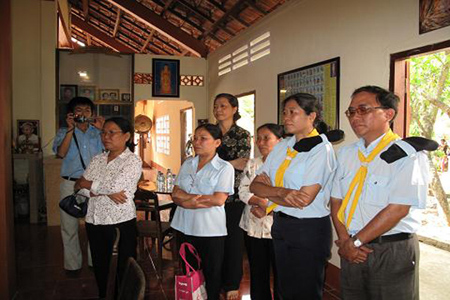Minh Su, whose full name is Giao Hoi Phat Duong Nam Tong Minh Su (Minh Su Southern Sect of the Phat Duong Congregation), is the origin of Ngu Chi Minh Dao (the Five Branches of the Minh Sect, including Minh Su,...
Minh Su
Minh Su, whose full name is Giao Hoi Phat Duong Nam Tong Minh Su (Minh Su Southern Sect of the Phat Duong Congregation), is the origin of Ngu Chi Minh Dao (the Five Branches of the Minh Sect, including Minh Su, Minh Ly, Minh Duong, Minh Thien and Minh Tan). Minh Su's activities took place spontaneously in South Vietnam in the early twentieth century and led to the appearance of Caodaism. Of all the five branches of the Minh sect, Minh Su and Minh Ly have developed most widely.
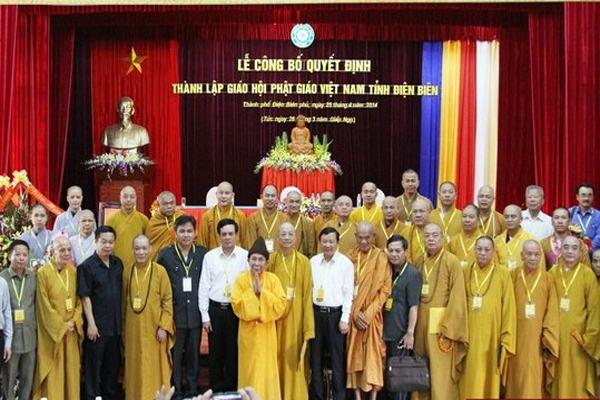
Minh Su sprang from the Phat Duong sect of the Chinese Zen sect. Specifically, after the time of the sixth patriarch, Hui-Neng (638-713), the Zen sect became weaker in China. Not until the late eighth century (783) was it revived by Dao Nhat and Bach Ngoc and given a new name, Phat Duong. This sect existed for a short time and was soon weakened by the repression of King Hien Duc of the Zhou Dynasty (China, 1122-256 BC). In 1623, at the end of the Ming Dynasty (1368- 1644), it was revived again after nearly eight hundred years of discontinuance. However, it was prosperous for only a short time, until the Manchu people from northern China overthrew the Ming Dynasty and founded the Qing Dynasty (1644-1911). Phat Duong was characterized by its messianic belief, following the Three Religions: Buddhism, Confucianism and Taoism. Its doctrine was divided into two parts: the Sudden Teaching and Gradual Teaching. The Gradual Teaching focused on the doctrine of Maitreya Bodhisattva, expressing the belief and expectation of a Saviour King. The Sudden Teaching advocated the saving of all beings.
When the Ming Dynasty was overthrown by the Qing Dynasty in China, many revolts rose up against the Qing Dynasty. Many revolts used religions, especially the ones containing messianic ideas, as a means of force for assembling against the Qing Dynasty. Typically, the Taiping Heavenly Kingdom movement (1850-1864) borrowed the thought of Christianity; Minh Su and the Heaven and Earth Society borrowed the thought of Phat Duong.
After Minh Su was consolidated with the idea of "Overthrow the Qing and restore the Ming," it was suppressed by the Qing Dynasty many times. As a result, many of its followers went overseas. After the failure of the Taiping Heavenly Kingdom movement, Minh Su was driven to Huanan, the center of the "Overthrow the Qing and restore the Ming" movement. Here, the fifteenth patriarch, Dong So, spread Minh Su to the south, first to Thailand and then to Vietnam (1863). The first pagoda of Minh Su in Vietnam was built in Ha Tien and called Quang Te Pagoda. Then, other foundations were built, such as Chieu Minh Pagoda (Sai Gon), Quang Nam Pagoda (Sai Gon), Vinh Te Pagoda and Van Nam Pagoda (Quy Nhon). The first pagodas of Minh Su mainly attracted Minh Huong people (the Chinese people living in South Vietnam). However, because of following the messianic idea of Three Religions together with its religious activities close to the Vietnamese people, Minh Su quickly gained influence in numerous Vietnamese communities in South Vietnam, especially after the change of motto "Overthrow the Qing and restore the Ming" to "Overthrow France and restore Vietnam." In the late nineteenth and early twentieth centuries , there were a lot of Vietnamese people following Minh Su, with many famous ones such as Ngo Dao Quan (or Ngo Dao Chuong in some documents), Ngo Minh Tuan, Tran Dang Trach, Tran Dao Tanh and Tran Van Chanh.
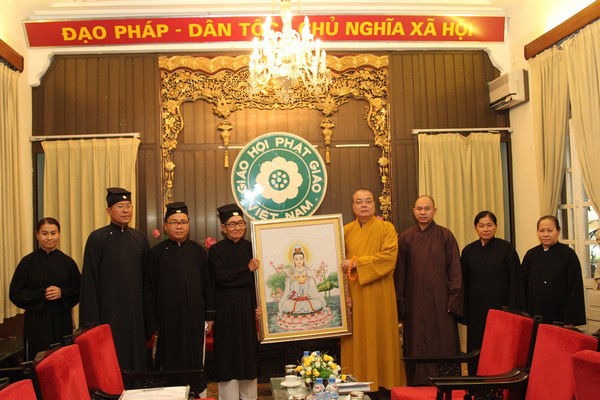
Minh Su follows the principles of compassion- enlightenment-release, unifying the quintessence of the three religions (Buddhism, Confucianism and Taoism) to find out the origin of religion for religious practice, self-enlightenment and self-release. The worship rites of Minh Su are performed at the central sanctum. The offerings are vegetarian food, fruits and cooked rice. Alcohol and foods of animal origin are forbidden.
There are nine ranks in the hierarchy of Minh Su, divided into three levels of practice: Ekayana (including three ranks, namely Nhat Bo, Nhi Bo and Tam Bo), Dviyana (including four ranks, namely Thien An, Chung An, Dan An and Bao an), Triyana (including two ranks Lao Su and Dai Lao Su). A person from among Lao Su and Dai Lao Su is elected to become Thai Lao Su-the leader. Prayer books of Minh Su include Ngoc Hoang kinh (the Jade Emperor's Prayer), Dia Mau Chon kinh (Mother Earth's Prayer), Van De Vo De Cuu kiep Chon kinh (the Prayer of the Civil Emperor and Military Emperor Who Saved the World), Bac Dau Chon kinh (the Prayer to the Seven Gods Who Govern the Seven Stars of the Big Dipper) and others. Particularly, Minh Su still maintains the rite of raising spirits by means of a Ouija board to communicate with the gods. The followers of Ngu Chi Minh Dao often use ngoc co. Normally, to raise spirits, it is necessary to have a Phap dan (the officiating priest), two Dong tu (assistants) and two Dien ky (who write down the letters indicated from the Ouija board). Besides, there are also Tu buu (four people who read and interpret the letters, praise and see off the spirits), Ho dan (the protector) and Chung dan (the witness). When raising spirits by means of the Ouija board, these people have to eat vegetarian food and take an oath of faithfulness. When beginning spelling out spiritualistic and telepathic messages, the performers take ngoc co in their arms, and sway and write letters on the table or the rice tray. Those letters are supernatural or from souls.
Followers of Minh Su practice long fasts and keep the commandments according to the Four Great Precepts and the Sixteen Precepts. They wear black blouses, white trousers, black turbans or hats and black canvas shoes.
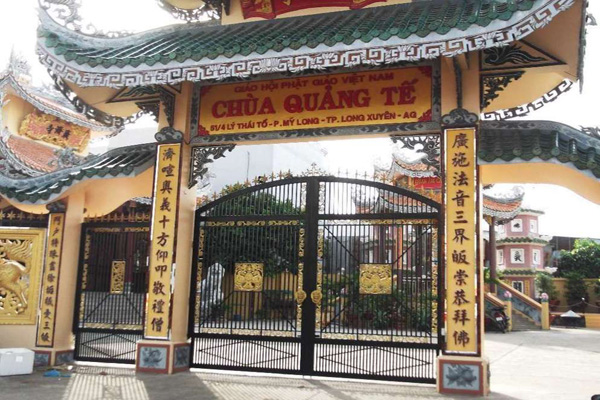
In 1920, the Minh Su Congregation was established. The organizational system includes the Central Executive Committee, the provincial associations in provinces and cities, and pagodas at grassroots level, with thousands of monks and followers. Since 1975, Minh Su has no longer maintained the Congregation, but has operated independently in each pagoda. On October 1, 2008, the Government Committee for Religious Affairs issued the Decision No. 196/QD-TGCP, which officially recognized the organization of Minh Su as Giao Hoi Phat Duong Nam Tong Minh Su with two levels: the central level and the grassroots level. The central level includes the Council of Elders (including five senior monks) and the Central Executive Committee (including seventeen dignitaries). At the grassroots level, there are pagoda management committees. In each province or city that has many pagodas and temples, a provincial or municipal management committee is established. This committee is not an administrative organ. It is a place that provides local pagodas with instructions for practice.
In 2009, Minh Su had approximately 10,000 followers and 52 pagodas within 18 provinces and cities (including Ben Tre, Long An, Ho Chi Minh City, Ba Ria-Vung Tau, Quang Nam, Quang Ngai, Tien Giang, Vinh Long, Ninh Binh, Hanoi, Kien Giang, Hau Giang, Can Tho, Da Nang, Dong Thap, Khanh Hoa, Phu Yen and Binh Dinh). The headquarter of Minh Su is Quang Nam Pagoda, which is located at 17 Tran Quang Khai Street, Tan Dinh Ward, District 1, Ho Chi Minh City.
Minh Ly
Minh Ly was founded in a session of raising spirits by using a Ouija board at Au Minh Chanh's house in 1924. The session was held by Au Minh Chanh, who was born in Minh Huong Village, Sai Gon, with the participation of Nguyen Van Miet, Nguyen Van Xung, Le Van Ngoc, Vo Van Thach and Nguyen Van De. Minh Ly advocated the use of prayer books and raising spirits by means of a Ouija board in modern Vietnamese script. After a period of borrowing the Linh Son Pagoda from monk Thien Chieu (Nguyen Van Tai) for the place of religious practice, in 1926 Au Minh Chanh and other founders built their own foundation named Tam Tong Mieu in Ban Co hamlet, Sai Gon (present-day at 82 Cao Thang Street, Ho Chi Minh City). By 1975, Minh Ly had four places of worship in which Tam Tong Mieu is the major one.
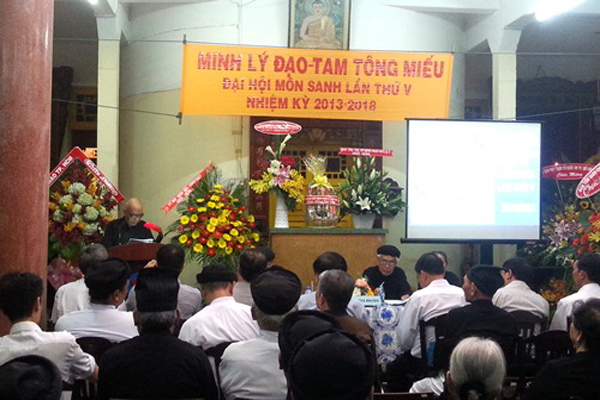
Minh Ly does not worship statues but tablets of gods. Buu Dien (the Principle Palace) of Minh Ly has Thien Ban (the God's Altar) including five ranks.
There are eight levels of practice, including Huong Tinh Su (for new followers); Chi Tinh Su, Tam Tinh Su and Thanh Tinh Su (training the will, mind and heart for disciples); Khiet Tinh Su, Vinh Tinh Su and Sieu Tinh Su (for bishops); and Giac Tinh Su (for patriarchs). Followers of Minh Ly must fast six days a month. Disciples must fast at least ten days a month. Bishops must leave their homes to become Buddhist monks. Practitioners of Minh Ly have to obey the commandments to cultivate the mind and soul. The offenders will be punished. Hoi Dong Hoi Thanh (the Assembly of Saints) has the highest power in Minh Ly, including Vien Bao Dao (in charge of the maintenance of the law) headed by Tong Ly and Vien Hanh Dao (responsible for administrative affairs) headed by Hiep Ly.
Male followers of Minh Ly wear black tunics, white trousers and black turbans; female followers wear black tunics and black trousers.
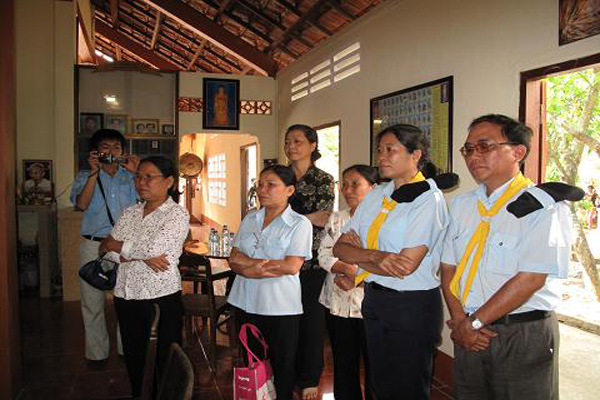
On October 1, 2008, the Government Committee for Religious Affairs issued the Decision No. 195/QD-TGCP, which recognized the organization of Minh Ly as Minh Ly Dao- Tam Tong Mieu. Presently, Minh Ly has approximately 1,000 followers with its headquarters located at 82 Cao Thang Street, Ho Chi Minh City.
Minh Duong
Minh Duong is the abbreviation of Minh Su Pho Te Phat Duong. It was established in 1908. Its only foundation is Vinh Nguyen Pagoda, administered by Le Dao Long (father of Le Van Lich) in Can Giuoc District.
Minh Thien
In 1915, Minh Thien was founded by a group of people including Tran Phat Dat, Tran Hien Vinh, Le Van Hon, Tran Duy Khanh, Le Ngoc Lang, Phan Van Ty and others. These people had frequently held sessions of raising spirits by means of a Ouija board to ask for medicine in Quan De or Thanh An Pagoda Thu Dau Mot (present-day Binh Duong Province). This pagoda is also the only foundation of Minh Thien.
Minh Tan
After attending two sessions of raising spirits by a Ouija board in Minh Thien Pagoda, Thu Dau Mot, to ask for medicine, Le Minh Kha (1868-1946), the Village Chief of Vinh Hoi, Sai Gon, as well as a businessman, founded Minh Tan. Its establishment is Tam Giao Dien Minh Tan located at 221 Ben Van Don Street, Sai Gon (present-day Ho Chi Minh City).
After the foundation of Caodaism, the establishments of Minh Duong, Minh Tan and Minh Thien were merged into Caodaism. Minh Su and Minh Ly have still operated independently, though they have close connection with Caodaism.

